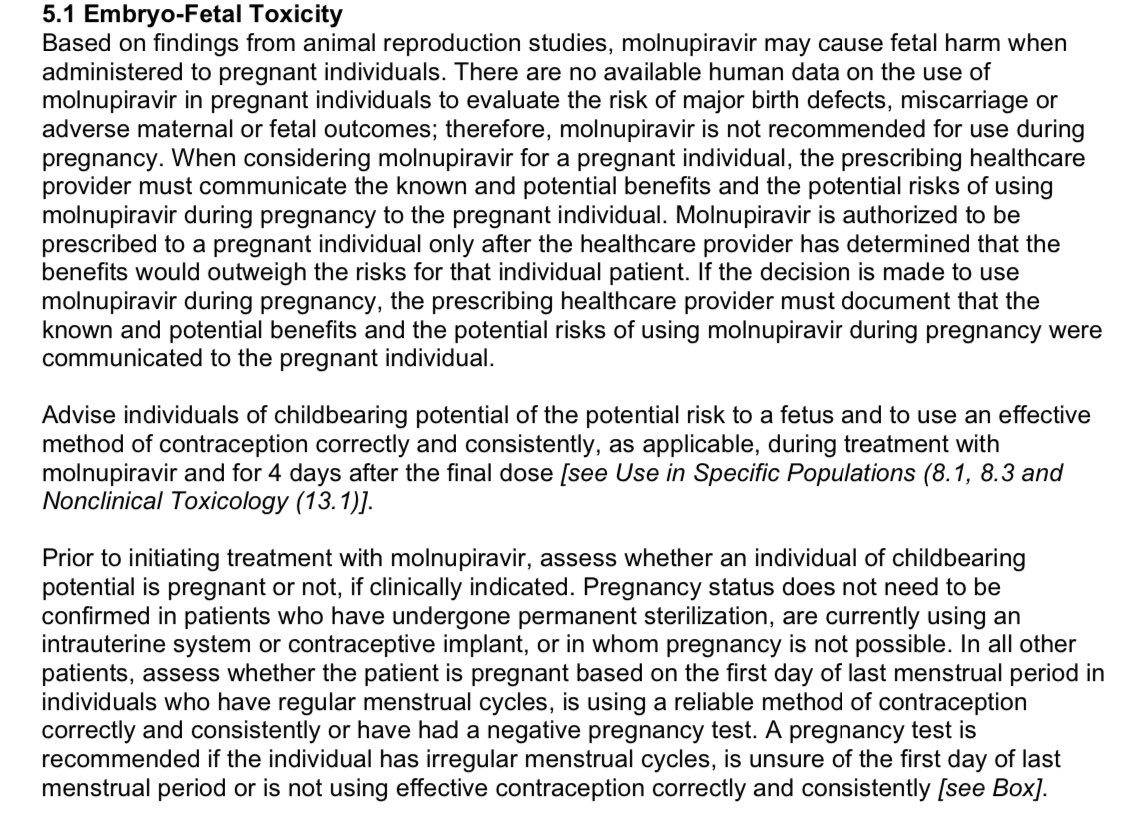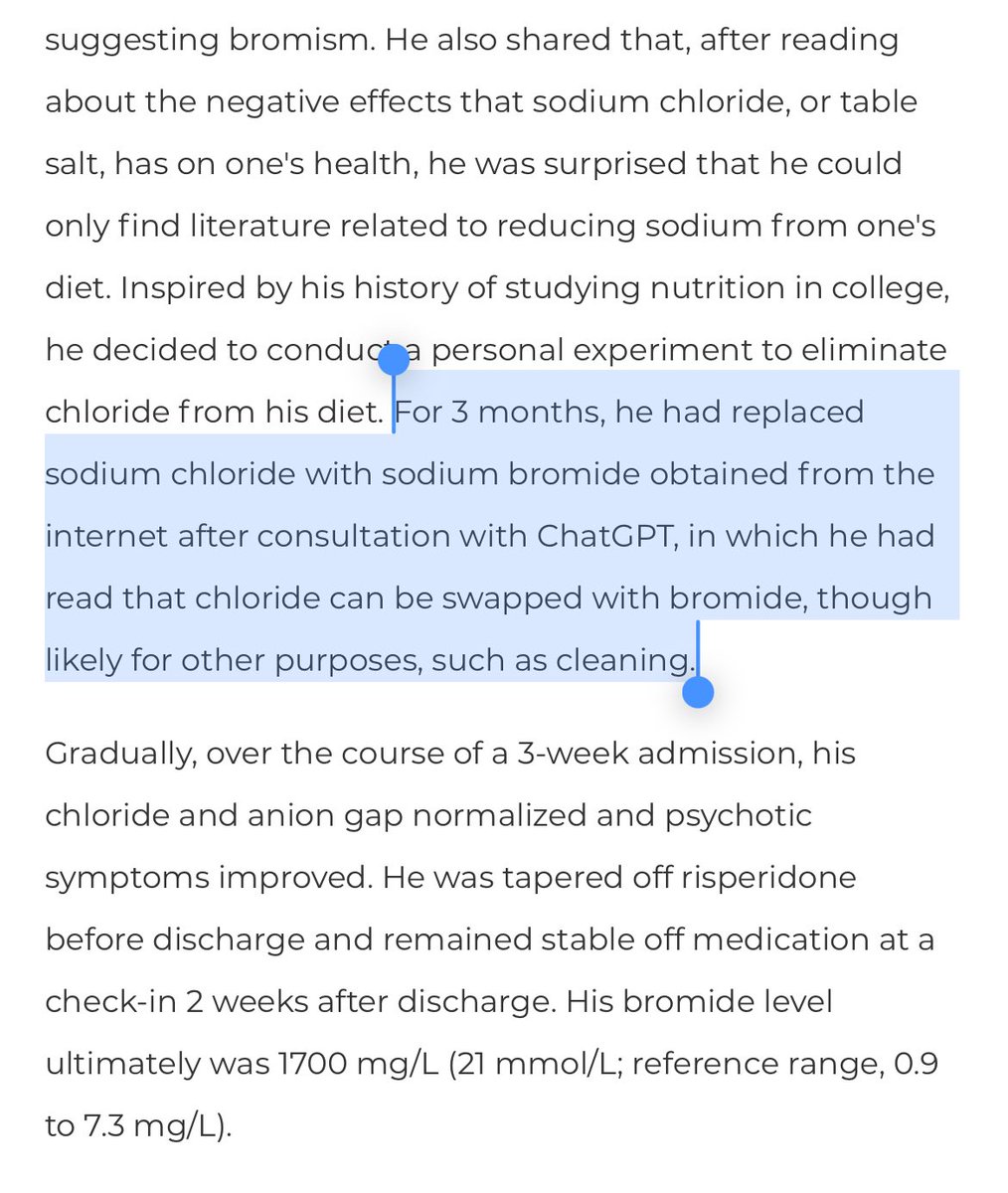More good news! FDA authorizes another oral COVID treatment today: molnupiravir
A short 🧵 about how molnupiravir (MOLN) works & how/when to use it.
1/
fda.gov/news-events/pr…
A short 🧵 about how molnupiravir (MOLN) works & how/when to use it.
1/
fda.gov/news-events/pr…
Molnupiravir is a pro-drug that is converted to the ribonucleoside analog N4-hydroxycytidine (NHC).
Phosphorylated NHC is incorporated into SARS-CoV-2 RNA by the viral RNA polymerase. This causes many mutations in the virus (“viral error catastrophe”), preventing replication.
2/


Phosphorylated NHC is incorporated into SARS-CoV-2 RNA by the viral RNA polymerase. This causes many mutations in the virus (“viral error catastrophe”), preventing replication.
2/



But wait aren’t mutations bad? Isn’t Omicron a bunch of mutations that make it more infectious?
The distinction is the *number* of mutations.
RNA viruses are error prone - accumulating on average 1-5 mutations with every copy.
MOLN induces many DOZENS of mutations at once.
3/
The distinction is the *number* of mutations.
RNA viruses are error prone - accumulating on average 1-5 mutations with every copy.
MOLN induces many DOZENS of mutations at once.
3/

Most mutations decrease fitness; they damage vital proteins & make the virus uninfectious
Rarely, a mutation increases fitness. These helpful mutations are selected for
If the mutation rate is too high, harmful mutations outnumber helpful ones. This is “error catastrophe”
4/

Rarely, a mutation increases fitness. These helpful mutations are selected for
If the mutation rate is too high, harmful mutations outnumber helpful ones. This is “error catastrophe”
4/


Omicron has accumulated about 50 mutations over 2 years, carefully selecting one by one for those that increase its infectivity
On the other hand, MOLN treatment (at the right dose) induces more mutations all at once. This causes every virus copy to be damaged/nonfunctional.
5/
On the other hand, MOLN treatment (at the right dose) induces more mutations all at once. This causes every virus copy to be damaged/nonfunctional.
5/
https://twitter.com/nickmmark/status/1472610287786233857
Thus, despite a mechanism that literally causes viral mutations, MOLN isn’t likely to “make a worse strain of COVID”
Also worth noting that people taking an antiviral for 5 days are hopefully in isolation! Even if there was magically a worse variant - how would it spread?
6/
Also worth noting that people taking an antiviral for 5 days are hopefully in isolation! Even if there was magically a worse variant - how would it spread?
6/
This is a great segue into another aspect of MOLN: who can take it?
Unlike Paxlovid which is approved in people >12 yo, molnupiravir is only approved in people over 18.
This is because of potential toxicity to cartilage in developing bones 🦴
7/
Unlike Paxlovid which is approved in people >12 yo, molnupiravir is only approved in people over 18.
This is because of potential toxicity to cartilage in developing bones 🦴
7/

MOLN is also contraindicated in pregnancy🤰🏻due to potential toxicity in embryogenesis.
For comparison, PAX isn’t contraindicated in pregnancy but there is no human data demonstrating safety.
8/

For comparison, PAX isn’t contraindicated in pregnancy but there is no human data demonstrating safety.
8/


More comparisons:
Unlike PAX, which has many drug drug interactions involving CYP3A4, MOLN doesn’t appear to have any significant ones.
Also unlike PAX, which requires a dose adjustment for GFR <60, there is apparently no renal dosing for MOLN.
9/


Unlike PAX, which has many drug drug interactions involving CYP3A4, MOLN doesn’t appear to have any significant ones.
Also unlike PAX, which requires a dose adjustment for GFR <60, there is apparently no renal dosing for MOLN.
9/



One important concern to mention is underdosing & compliance:
- it’s important that patients understand that they should take MOLN as prescribed (eg twice daily for 5 days).
Theoretically if they were to stop early or underdose it *could* lead to harmful viral mutations.
10/
- it’s important that patients understand that they should take MOLN as prescribed (eg twice daily for 5 days).
Theoretically if they were to stop early or underdose it *could* lead to harmful viral mutations.
10/
Last, the all important question: how well does MOLN work? To answer, we need to look at the trial data…this is where it gets less compelling btw
MOVe-OUT randomized 1433 unvaxxed adults with ≥1 risk factor to MOLN vs placebo
clinicaltrials.gov/ct2/show/NCT04…
nejm.org/doi/full/10.10…
11/


MOVe-OUT randomized 1433 unvaxxed adults with ≥1 risk factor to MOLN vs placebo
clinicaltrials.gov/ct2/show/NCT04…
nejm.org/doi/full/10.10…
11/



They enrolled outpatients with a positive COVID test within 5 days. Participants had to have a risk factor for severe COVID, though they were pretty common ones:
obesity (40% of Americans)
age >60 (22% of US)
CKD (15%)
DM (10%)
CHF,CAD,CM (~7%)
COPD (6%)
active cancer
12/
obesity (40% of Americans)
age >60 (22% of US)
CKD (15%)
DM (10%)
CHF,CAD,CM (~7%)
COPD (6%)
active cancer
12/
Outpatients from 107 sites in 20 countries were randomized to molnupiravir 800 mg BID x5 days vs placebo.
The primary outcome was hospitalization/death or incidence of adverse events (AEs).
Secondary outcomes include time to resolution of symptoms:
13/
The primary outcome was hospitalization/death or incidence of adverse events (AEs).
Secondary outcomes include time to resolution of symptoms:
13/

The patients were fairly representative of a COVID population.
Roughly event split of men and women
About 2/3 were under 50yo
About 1/3 had Delta, the rest a mixture of other clades
About 1/2 were randomized within 3 days of symptoms
14/

Roughly event split of men and women
About 2/3 were under 50yo
About 1/3 had Delta, the rest a mixture of other clades
About 1/2 were randomized within 3 days of symptoms
14/


There were fewer hospitalizations/deaths with MOLN:
6.8% (48/709 participants) vs 9.7% (68/699); an ARR of 3% or a NNT of 33 to prevent 1 hospitalization/death
Mortality was (just barely) significant
0.1% (1 death) MOLN vs 1.3% (9 deaths) placebo
NNT 83 to prevent a death
15/

6.8% (48/709 participants) vs 9.7% (68/699); an ARR of 3% or a NNT of 33 to prevent 1 hospitalization/death
Mortality was (just barely) significant
0.1% (1 death) MOLN vs 1.3% (9 deaths) placebo
NNT 83 to prevent a death
15/


The rate of AEs and SAEs was similar in both groups:
Diarrhea, nausea, and dizziness were more frequent with MOLN (occurred in 1-2% of patients)
The single death in the MOLN group was reportedly related to bacterial pneumonia
(side note: this is a super weird figure legend)
16/

Diarrhea, nausea, and dizziness were more frequent with MOLN (occurred in 1-2% of patients)
The single death in the MOLN group was reportedly related to bacterial pneumonia
(side note: this is a super weird figure legend)
16/


MOVe-OUT was stopped early for efficacy after interim analysis.
After stopping enrollment, the numbers got a bit worse as they followed patients out to 29 days
This isn't shocking - regression to the mean & late worsening - but it was bad optics after their big press release
17/



After stopping enrollment, the numbers got a bit worse as they followed patients out to 29 days
This isn't shocking - regression to the mean & late worsening - but it was bad optics after their big press release
17/




A 2nd study, done by Hetero pharma in 🇮🇳 also looked at MOLN in outpatients.
This open label trial enrolled n=741 patients.
They found a less impressive (but still significant) reduction in hospitalization: 1.9% vs 6.2%, ARR 4.3%.There were no deaths or SAEs
18/

This open label trial enrolled n=741 patients.
They found a less impressive (but still significant) reduction in hospitalization: 1.9% vs 6.2%, ARR 4.3%.There were no deaths or SAEs
18/


• • •
Missing some Tweet in this thread? You can try to
force a refresh
































